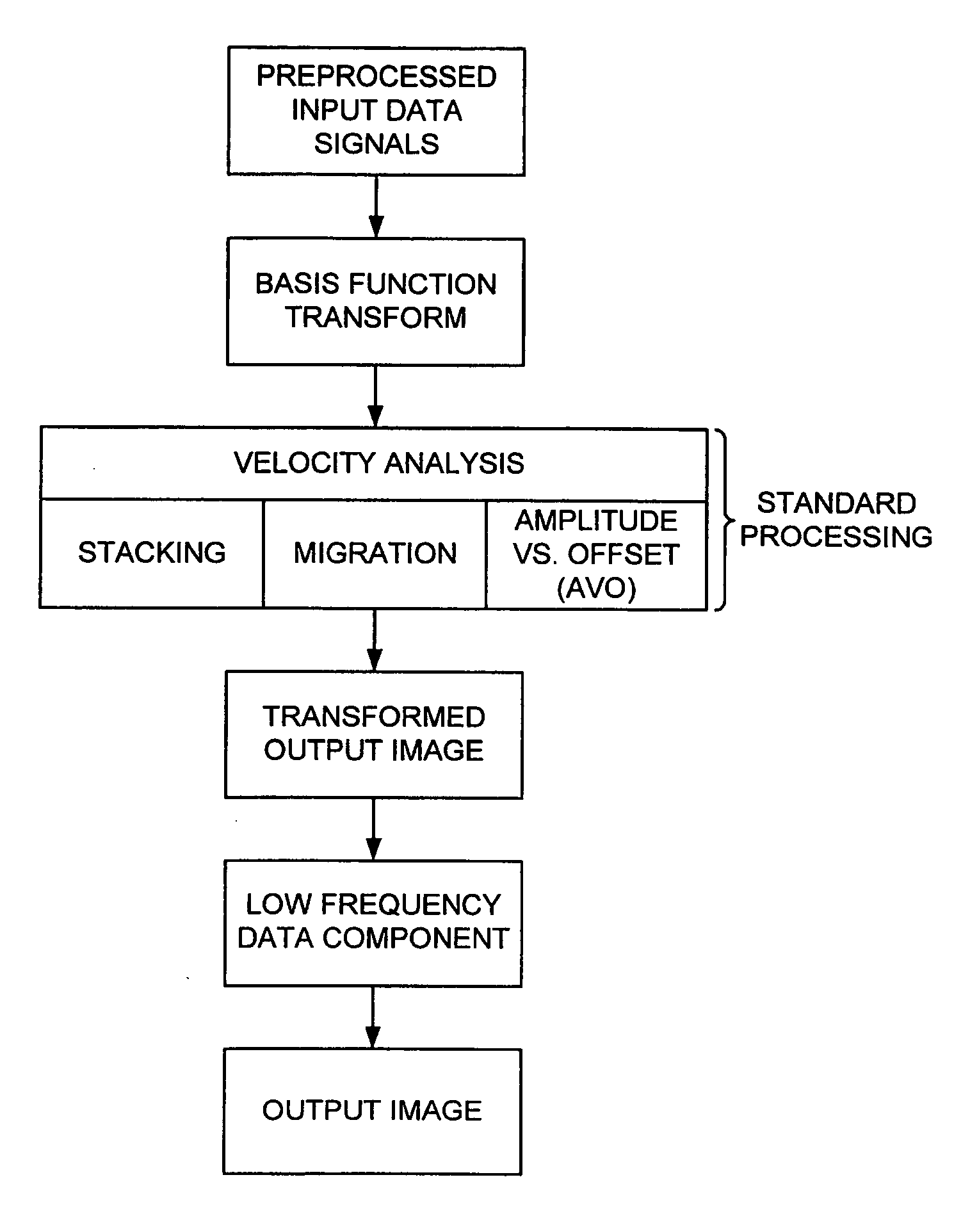Frequency-dependent processing and interpretation (FDPI) of seismic data for identifying, imaging and monitoring fluid-saturated underground reservoirs
a technology of seismic data and frequency-dependent processing, applied in the field of identifying, imaging and monitoring of fluid-saturated underground reservoirs, can solve the problems of seismic data layer being obscured, traditional seismic methods cannot image layers less than 10 meters thick, and apparent anomalous velocity dispersion in the reflected waves
- Summary
- Abstract
- Description
- Claims
- Application Information
AI Technical Summary
Benefits of technology
Problems solved by technology
Method used
Image
Examples
Embodiment Construction
Defined Terms
[0043] Computer: any device capable of performing the steps developed in this invention to result in an optimal waterflood injection, including but not limited to: a microprocessor, a digital state machine, a field programmable gate array (FGPA), a digital signal processor, a collocated integrated memory system with microprocessor and analog or digital output device, a distributed memory system with microprocessor and analog or digital output device connected with digital or analog signal protocols.
[0044] Computer readable media: any source of organized information that may be processed by a computer to perform the steps developed in this invention to result in an optimal waterflood injection, including but not limited to: a magnetically readable storage system; optically readable storage media such as punch cards or printed matter readable by direct methods or methods of optical character recognition; other optical storage media such as a compact disc (CD), a digital...
PUM
 Login to View More
Login to View More Abstract
Description
Claims
Application Information
 Login to View More
Login to View More - R&D
- Intellectual Property
- Life Sciences
- Materials
- Tech Scout
- Unparalleled Data Quality
- Higher Quality Content
- 60% Fewer Hallucinations
Browse by: Latest US Patents, China's latest patents, Technical Efficacy Thesaurus, Application Domain, Technology Topic, Popular Technical Reports.
© 2025 PatSnap. All rights reserved.Legal|Privacy policy|Modern Slavery Act Transparency Statement|Sitemap|About US| Contact US: help@patsnap.com



